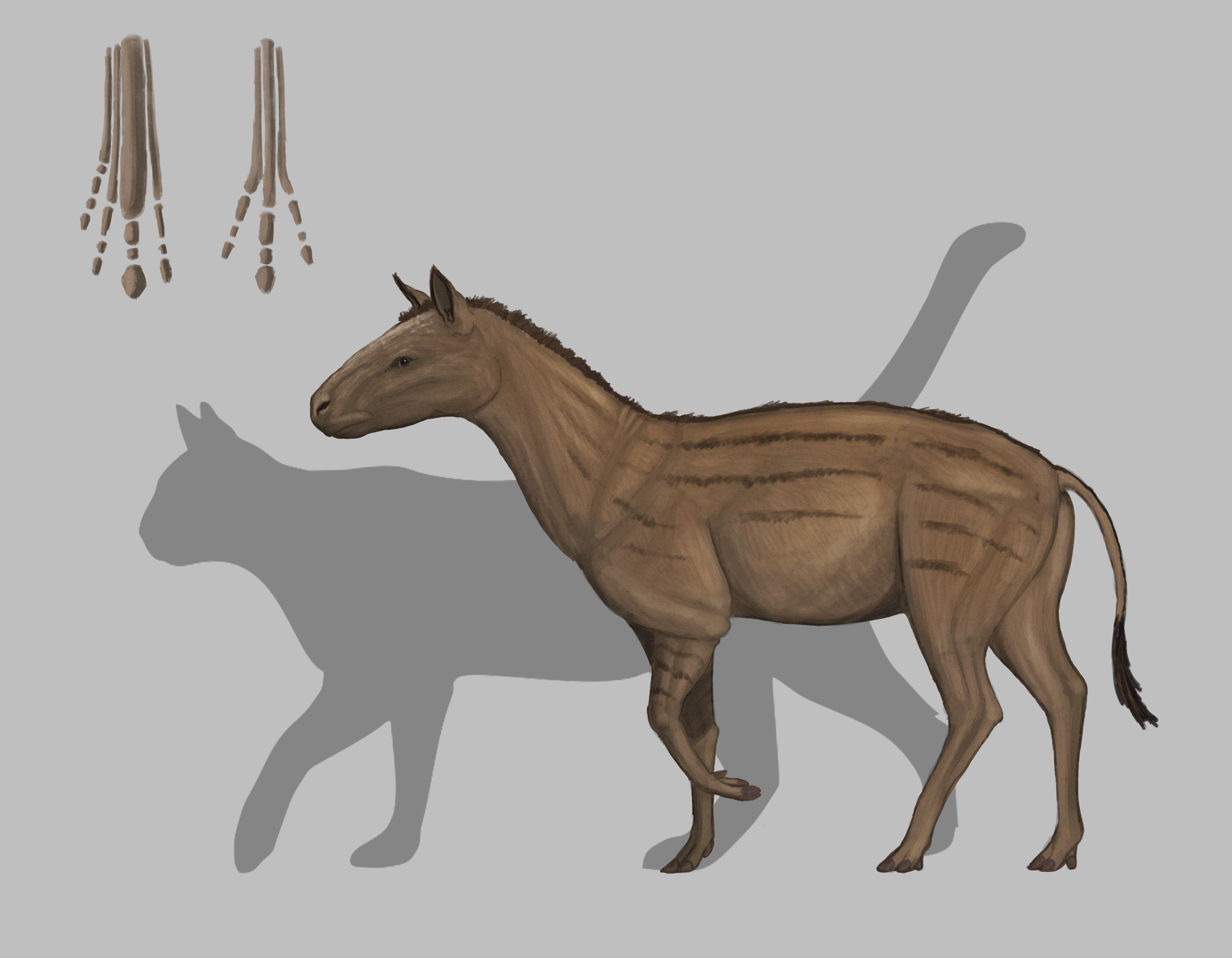|
Eotitanops
''Eotitanops'' ('dawn titan-face') is an extinct genus of brontothere native to North America and Asia. ''Eotitanops'' is the earliest known genus of brontothere. While brontotheres generally known as very large animals, ''Eotitanops'' was only tall at the shoulder. It probably resembled a larger, bulkier version of its contemporary, the horse-like palaeothere ''Hyracotherium ''Hyracotherium'' ( ; "hyrax-like beast") is an extinction, extinct genus of small (about 60 cm in length) perissodactyl ungulates that was found in the London Clay formation. This small, fox-sized animal is (for some scientists) considered t ...''. Like ''Hyracotherium'', it ate leaves and had five-toed front legs and three-toed hind legs. References * Brontotheres Eocene Perissodactyla Eocene mammals of North America {{paleo-oddtoedungulate-stub ... [...More Info...] [...Related Items...] OR: [Wikipedia] [Google] [Baidu] |
Brontothere
Brontotheriidae is a family of extinct mammals belonging to the order Perissodactyla, the order that includes horses, rhinoceroses, and tapirs. Superficially, they looked rather like rhinos with some developing bony nose horns, and were some of the earliest mammals to have evolved large body sizes of several tonnes. They lived around 56–34 million years ago, until the very close of the Eocene. Brontotheres had a Holarctic distribution, with the exception of Western Europe: they occupied North America, Asia, and Eastern Europe. They were the first fossilized mammals to be discovered west of the Mississippi, and were first discovered in South Dakota. Characteristics and evolution This group has also been referred to as "Titanotheres." "Titan" refers to the mythological Greek gods who were symbols of strength and large size, and "theros" is Greek for "wild animal." "Bronto" is Greek for "thunder," which may be how this group got the nickname "thunder beasts." Brontotheres retai ... [...More Info...] [...Related Items...] OR: [Wikipedia] [Google] [Baidu] |
Genus
Genus (; : genera ) is a taxonomic rank above species and below family (taxonomy), family as used in the biological classification of extant taxon, living and fossil organisms as well as Virus classification#ICTV classification, viruses. In binomial nomenclature, the genus name forms the first part of the binomial species name for each species within the genus. :E.g. ''Panthera leo'' (lion) and ''Panthera onca'' (jaguar) are two species within the genus ''Panthera''. ''Panthera'' is a genus within the family Felidae. The composition of a genus is determined by taxonomy (biology), taxonomists. The standards for genus classification are not strictly codified, so different authorities often produce different classifications for genera. There are some general practices used, however, including the idea that a newly defined genus should fulfill these three criteria to be descriptively useful: # monophyly – all descendants of an ancestral taxon are grouped together (i.e. Phylogeneti ... [...More Info...] [...Related Items...] OR: [Wikipedia] [Google] [Baidu] |
Palaeothere
Palaeotheriidae is an extinct family of herbivorous perissodactyl mammals that inhabited Europe, with less abundant remains also known from Asia, from the mid-Eocene to the early Oligocene. They are classified in Equoidea, along with the living family Equidae (which includes zebras, horses and asses). Morphology Palaeotheres ranged widely in size, from small species like '' Palaeotherium lautricense,'' which is estimated to have only weighed to large species like '' Palaeotherium magnum'', which are comparable in size to living equines, with body masses over . Their teeth are brachydont (low crowned). According to Danilo et al. 2013., paleotheriids are distinguished from other equoids by one unambiguous synapomorphy "the nasal notch opening distally to the canine, above the postcanine diastema" and two unambiguous character state changes "an average metaconule on he fourth premolar and "an oblique metastyle on he first and second molars. Taxonomy Palaeotheriidae is gener ... [...More Info...] [...Related Items...] OR: [Wikipedia] [Google] [Baidu] |
Hyracotherium
''Hyracotherium'' ( ; "hyrax-like beast") is an extinction, extinct genus of small (about 60 cm in length) perissodactyl ungulates that was found in the London Clay formation. This small, fox-sized animal is (for some scientists) considered to be the earliest known member of Equidae before the type species, ''H. leporinum'', was reclassified as a palaeothere, a perissodactyl family (biology), family related to both horses and brontotheres. The remaining species are now thought to belong to different genera, such as ''Eohippus'', which had previously been synonymised with ''Hyracotherium''. Description ''Hyracotherium'' averaged 78 cm (2.5 feet) in length and weighed about 9 kg (20 pounds). It had a short face with eye sockets in the middle and a short diastema (the space between the front teeth and the cheek teeth). The skull was long, having 44 low-crowned teeth. Although it had low-crowned teeth, the beginnings of the characteristic horse-like ridges on the molars ... [...More Info...] [...Related Items...] OR: [Wikipedia] [Google] [Baidu] |
Eocene Perissodactyla
The Eocene ( ) is a geological epoch that lasted from about 56 to 33.9 million years ago (Ma). It is the second epoch of the Paleogene Period in the modern Cenozoic Era. The name ''Eocene'' comes from the Ancient Greek (''Ēṓs'', 'Dawn') and (''kainós'', "new") and refers to the "dawn" of modern ('new') fauna that appeared during the epoch.See: *Letter from William Whewell to Charles Lyell dated 31 January 1831 in: * From p. 55: "The period next antecedent we shall call Eocene, from ήως, aurora, and χαινος, recens, because the extremely small proportion of living species contained in these strata, indicates what may be considered the first commencement, or ''dawn'', of the existing state of the animate creation." The Eocene spans the time from the end of the Paleocene Epoch to the beginning of the Oligocene Epoch. The start of the Eocene is marked by a brief period in which the concentration of the carbon isotope 13C in the atmosphere was exceptionally low in com ... [...More Info...] [...Related Items...] OR: [Wikipedia] [Google] [Baidu] |





